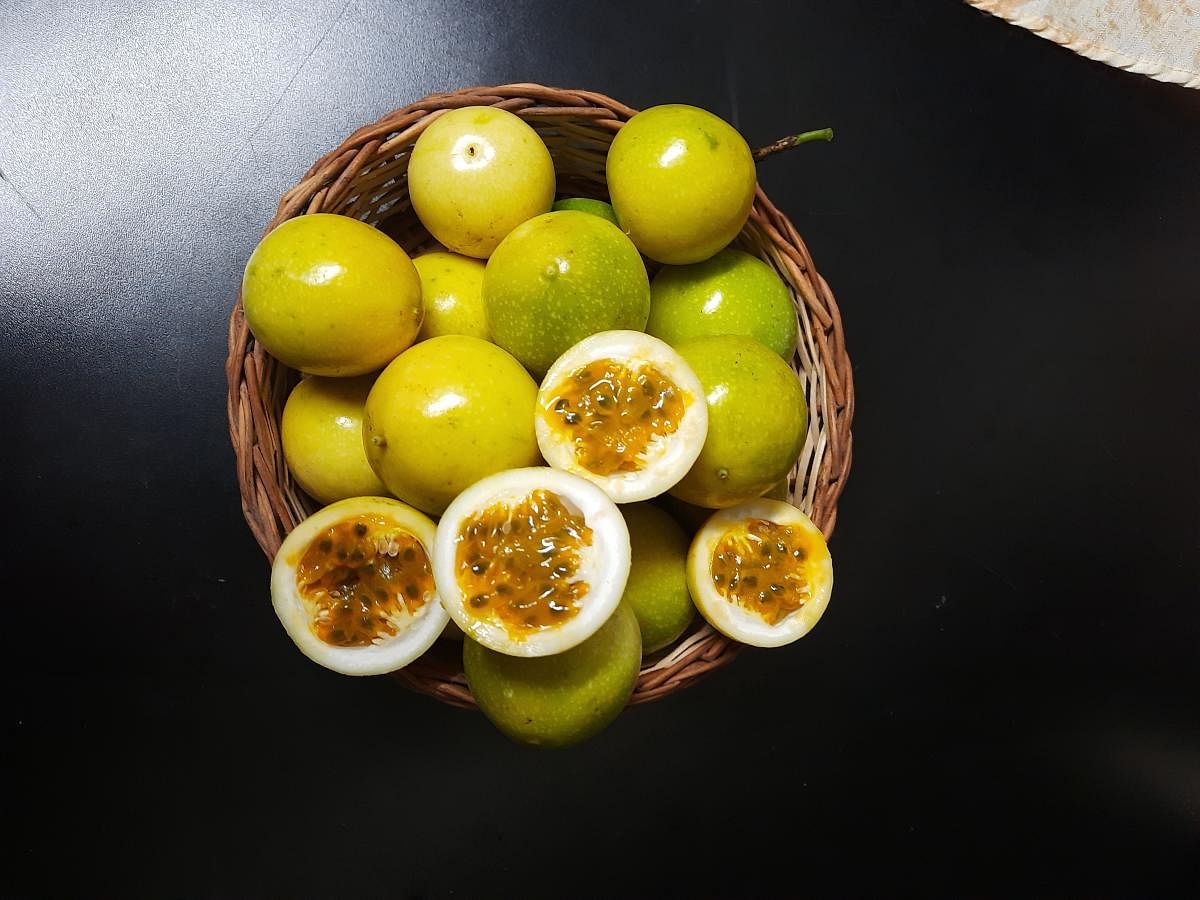
This alluring fruit and vine goes by the name of passion fruit and passion vine! Native to Brazil, this fruit has enchanting stories in Hindu and Christian mythologies.
To the Christian missionaries, the corona of the flower resembled the crown of thorns that Jesus wore — a symbol of suffering during crucifixion. And to the Hindus, the fruit and flower known as Krishna phal and Krishna Kamal respectively, the flower provides a platform to the Mahabharata characters. Kauravas are the 100 or so thin filaments that form the outer layer, Pandavas the five yellow petals and the sensitive but firm Draupadi the green bulb. The imagination is topped by the Hindu holy trinity of Brahma, Vishnu and Maheshwara. Finally, Lord Krishna with his Sudarshan Chakra is right there, in the form of a colourful radial at the centre.
A powerhouse of nutrients
Covid-19 crisis has been waking us up to several new finds, as immunity boosters. Passion fruit is one such packed with nutrients. For every 100 gm of the pulp, it contains 30 mg of Vitamin C, and meets 50 per cent of the recommended daily allowance (RDA), important as an immunity booster. The fruit is also a storehouse of Vitamin A, 12721 IU that serves as an antioxidant helping prevent cancer. While Vitamins riboflavin (B6) and niacin (B3) regulate thyroid activity, iron and folate aid haemoglobin formation. Generous as this fruit is, its low glycaemic index and high fibre content help maintain the insulin levels in diabetics. Minerals like magnesium reduce anxiety and stress, potassium maintains the blood pressure levels and others like calcium and phosphorous could prevent osteoporosis.
Enrich your food store
The round to oval fruit, yellow at maturity when sliced into, emanates a unique and exotic flavour — a heady mixture of the smells of guava, mango, pineapple and melons well blended with a floral essence. Within the rind are enclosed the soft membranous sacs holding the orange coloured pulpy juice and numerous seeds, which are edible and crunchy resembling the falooda seeds. The pulp being sour, is best consumed as juice with a liberal dash of sugar to the diluted pulp. The juice pairs well with orange, lemon and guava whose flavour and nutritional value can be further enhanced by the addition of mint, ginger and other herbs and spices.
The scooped pulp can be stored in the freezer up to 8 months for a refreshing summer drink.
Homemakers can churn out squashes and jams from the pulp and chutneys and pickles by combining the sour pulp with the edible rind. In the western countries, the fruit is popularly used in ice creams, cocktails with or without alcohol, and in syrup form for a variety of cakes, pastries, pies, tarts, fruit toppings and other desserts.
(The author is a professor at UAS, Dharwad)